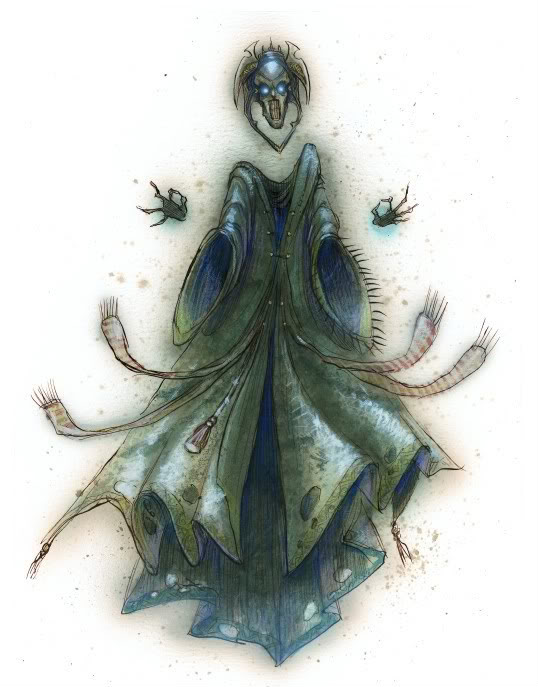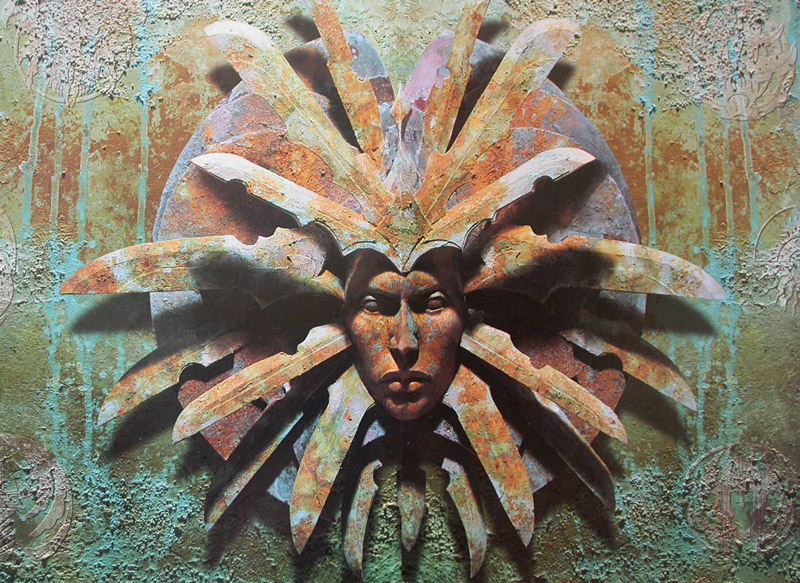The Corpse Tenement
A roleplaying campaign of 5-10 sessions based on Planescape. 4-5 players. Played during 2017.
Concept
Planescape is a setting published for Advanced Dungeons & Dragons 2nd Edition in the 90’s. In all its bizarre originality and philosophical vision, it’s the best thing published for any edition of D&D. I’ve wanted to make a game based on Planescape for a long time, but I believe the setting is ill-served by the mechanics and base assumptions of D&D. That’s why The Corpse Tenement builds on my interpretation of Planescape and will be largely systemless, based on a very specific scenario in the vast space of possibility that Planescape presents.
As a player, everything you need to know will be introduced when you need it. No prior knowledge of the setting is necessary.
Planescape is a fantasy setting set among the infinities of other planes of existence. At its center is Sigil, the City of Doors, a multicultural metropolis and meeting point famous for its multitude of portals that lead to all over existence. This is where The Corpse Tenement will largely be set. If you want to get a feeling of how Sigil works, imagine a Dickens novel seen through the prism of Hieronymus Bosch.
Sigil has no government. Anyone attempting to subdue its anarchy will be destroyed by its protector and avatar, the Lady of Pain (seen in the picture at the top of this post). Sigil’s political space is occupied by factions promoting different ideologies and political ideas. They exist in a state of perpetual warfare while also taking care of the functions that a living city needs to have, as if all the ministries of a government we’re actively at each other’s throats with no central authority to keep them in check.
One of these factions is the Dustmen, who believe that the distinction between life and death is an illusion and that we’re all dead already. They operate the city Mortuary and are responsible for funerals and disposing of the dead. The player characters in The Corpse Tenement are members of the Dustmen, working for an organization somewhere between a union, a cult and an undertaker. The characters’ position in the faction is high enough that they can influence its direction and tactics.

The Dustmen are led by factol Skall, a lich and the only faction leader to also be a faction founder.
Other factions in Sigil are the Athar, atheists who deny the gods despite the fact that they very obviously exist, the Mercykillers who deliver punishment after a judgement from the Fraternity of Order and an arrest by the police forces of the Harmonium, and Transcendent Order who believe in the revelatory power of inner truth.
The focus of the game is on the ordinary and extraordinary experiences of the death business in a world of infinite wonder, relationships and the social life of the characters, and the opportunities one can find when something big happens. In the beginning of the game, we find the characters taking care of typical Dustmen business, but as the game goes on, larger events provide interesting goals and choices for both the characters and their faction.
A challenge traditionally presented by Planescape is that the setting is too overwhelming and confusing to grasp. Because of this, I’ll try to keep things resolutely anchored in human experience. Something huge might be happening in the background, but in The Corpse Tenement, the characters fall in love, worry about their families and come five minutes late to work in the morning the same as anyone else. Even if the work is at the Mortuary, the site of a portal to the death energies of the Negative Energy Plane.
(Planescape might be familiar as the setting of the videogame Planescape: Torment. Its starting scene happens in the Dustmen Mortuary.)
Setting
The setting is in some ways very traditional fantasy. Swords and bows. Magic, elves and undead. Ordinary people and demigods. In the interpretation I’m working with, player characters are not heroes or super wizards. They have their capabilities, but they’re operating on a relatively human level. Their power comes from the Dustmen, backed by their essential role in running the city, the eldritch power of the faction’s liches and its army of former members kept as undead, waiting in the Fortress of the Soul.
Other beings, demons and angels, can be vastly more powerful on an individual level, but in Sigil they don’t have an organizational advantage, and any serious plays they might make are curtailed by the Lady of Pain. Thus, the characters might be on the human level, but they have things of their own that give them power.
The characters can be from Sigil or from somewhere else. Sigil is a place of immense disparities of wealth and standard of living. The poor live in desperate poverty and the rich in opulent comfort. The Dustmen are an egalitarian faction in the sense that its members are selected based on mystifying criteria only understood by the ancient death priests. The daughter of a ragpicker has an equal chance of being admitted as the son of a lord.
There are old Dustmen families, but the faction is not big on sex for the purpose of procreation and many of those born into the faction end up defecting. Thus, a second-generation Dustman is something of a curiosity.
In terms of promotion, the faction is partially meritocratic, partially just confusing. Sometimes you can get promoted because the death omens say so. In Sigil, the Dustmen are not a particularly high status faction and have no role among the glittering elites. However, they are relatively secure. A chaos-loving Xaositect is always in danger of being apprehended by a Harmonium patrol, but a Dustman can walk the streets in peace. Indeed, the faction has a mystical pact of peace with any undead or gods of death they might encounter.
Sigil is a traveler’s dream, the center of the multiverse, the city in the crossroads. Dustmen business can take the characters to other planes, from the blinding holiness of Mount Celestia to the howling caverns of Pandemonium, but the focus of the game remains solidly with Sigil.
Character Creation
I’ll make templates that contain the features the characters need to have to function in the game. The players can choose between the templates and elaborate on them to create proper three dimensional characters. We’ll hold a character creation session before starting the game proper.




Recent Comments